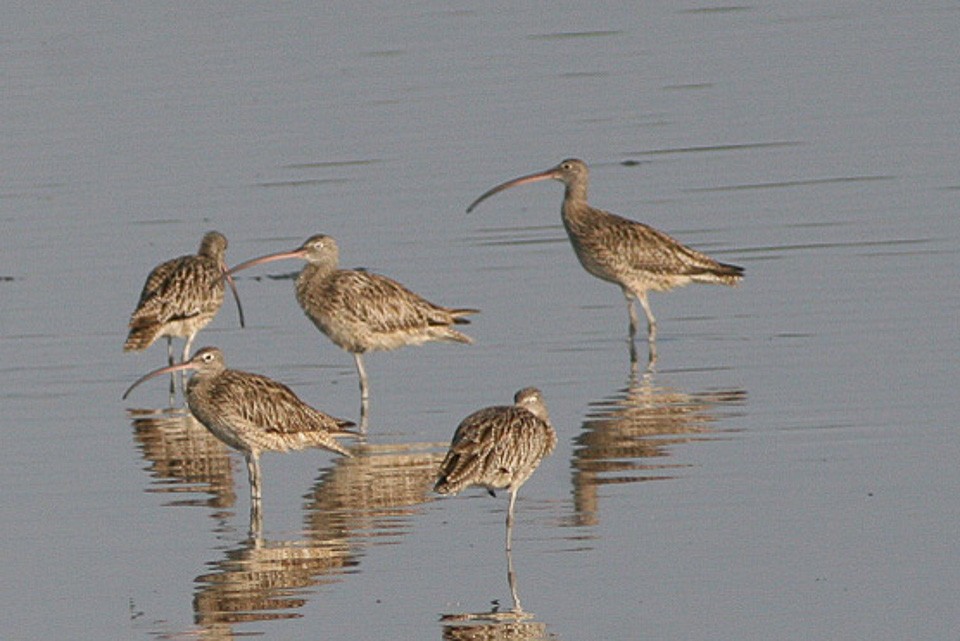Far Eastern Curlew
A species of Curlews Scientific name : Numenius madagascariensis Genus : Curlews
Far Eastern Curlew, A species of Curlews
Botanical name: Numenius madagascariensis
Genus: Curlews
Content
Description General Info
Description
The Far Eastern curlew (Numenius madagascariensis) is a large shorebird most similar in appearance to the long-billed curlew, but slightly larger. It is mostly brown in color, differentiated from other curlews by its plain, unpatterned brown underwing. It is not only the largest curlew but probably the world's largest sandpiper, at 60–66 cm (24–26 in) in length and 110 cm (43 in) across the wings. The body is reportedly 565–1,150 g (1.246–2.535 lb), which may be equaled by the Eurasian curlew. The extremely long bill, at 12.8–20.1 cm (5.0–7.9 in) in length, rivals the bill size of the closely related long-billed curlew as the longest bill for a sandpiper. The Far Eastern curlew spends its breeding season in northeastern Asia, including Siberia to Kamchatka, and Mongolia. Its breeding habitat is composed of marshy and swampy wetlands and lakeshores. Most individuals winter in coastal Australia, with a few heading to South Korea, Thailand, Philippines and New Zealand, where they stay at estuaries, beaches, and salt marshes. During its migration the Far Eastern curlew commonly passes the Yellow Sea. It uses its long, decurved bill to probe for invertebrates in the mud. It may feed in solitary but it generally congregates in large flocks to migrate or roost. Its call is a sharp, clear whistle, cuuue-reee, often repeated. As of 2006, there are an estimated 38,000 individuals in the world. Formerly classified as least concern by IUCN, it was found to have been rarer than previously believed and thus its status was updated to "vulnerable" in the 2010 IUCN red list of threatened species. In Australia its status under the Environment Protection and Biodiversity Conservation Act is "critically endangered". 
Size
61 cm (24 in)
Life Expectancy
19 years
Nest Placement
Ground
Feeding Habits
Far Eastern Curlew primarily feeds on marine invertebrates, including polychaete worms, small molluscs, crabs, and other crustaceans, as well as insects and their larvae. Utilizing its long bill, far Eastern Curlew probes mudflats for prey, showing a preference for coastal habitats.
Habitat
Far Eastern Curlew predominantly inhabits coastal and wetland ecosystems. In its breeding season, far Eastern Curlew favors open mossy bogs, moss-lichen bogs, wet meadows, and swampy lake shores, but shows a preference for drier nesting sites within these wet habitats. For feeding during breeding, large sphagnum bogs with diverse vegetation are preferred. Outside the breeding season, far Eastern Curlew is essentially coastal, frequenting estuaries, mangrove swamps, intertidal mudflats, sandflats with seagrass meadows, and occasionally sandy beaches. Roosting sites often include saltmarshes protected by mangroves or beaches.
Dite type
Aquatic invertebrate eater
General Info
Feeding Habits
Bird food type
Species Status
ENDANGERED. Formerly considered Near Threatened. Listed as Critically Endangered in Australia given evidence that species has perhaps declined by c. 80% in last 30 years.
Scientific Classification
Phylum
Chordates Class
Birds Order
Shorebirds Family
Sandpipers Genus
Curlews Species
Far Eastern Curlew 